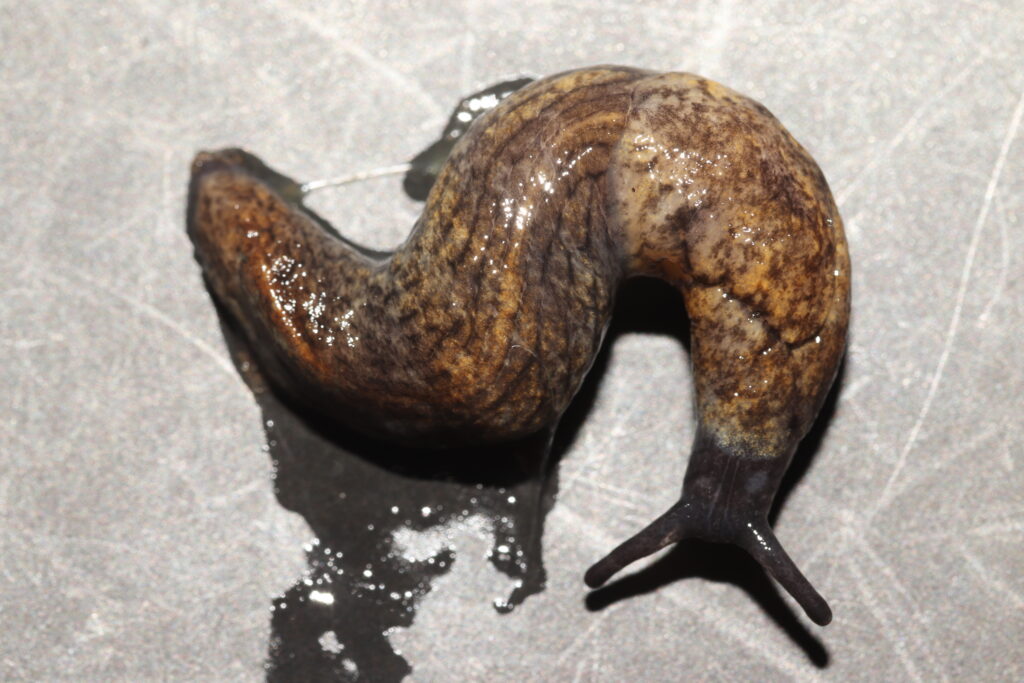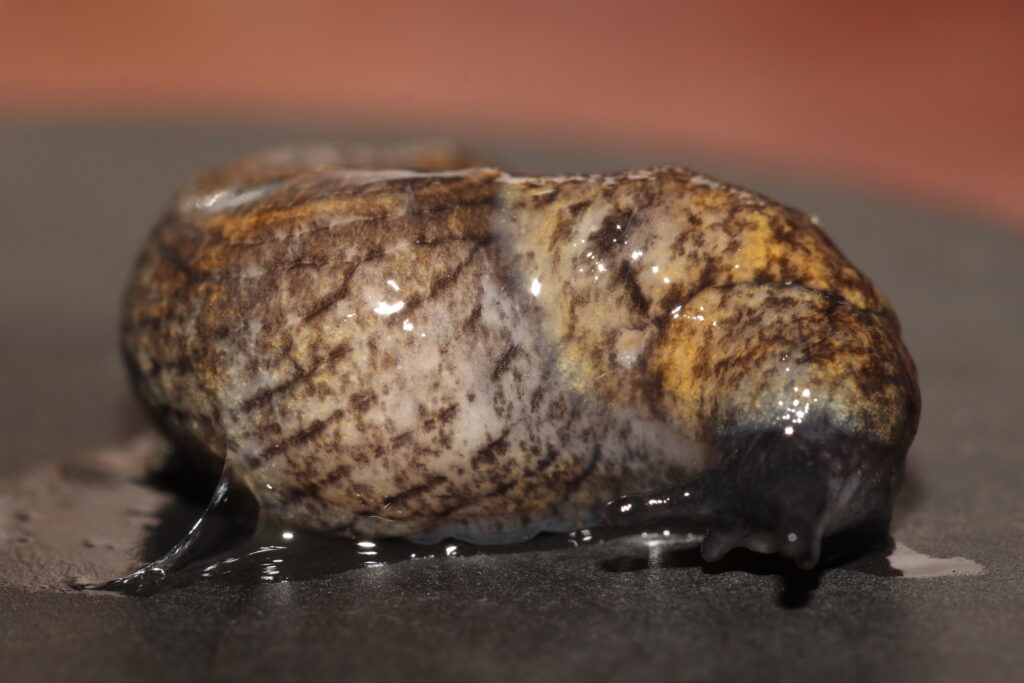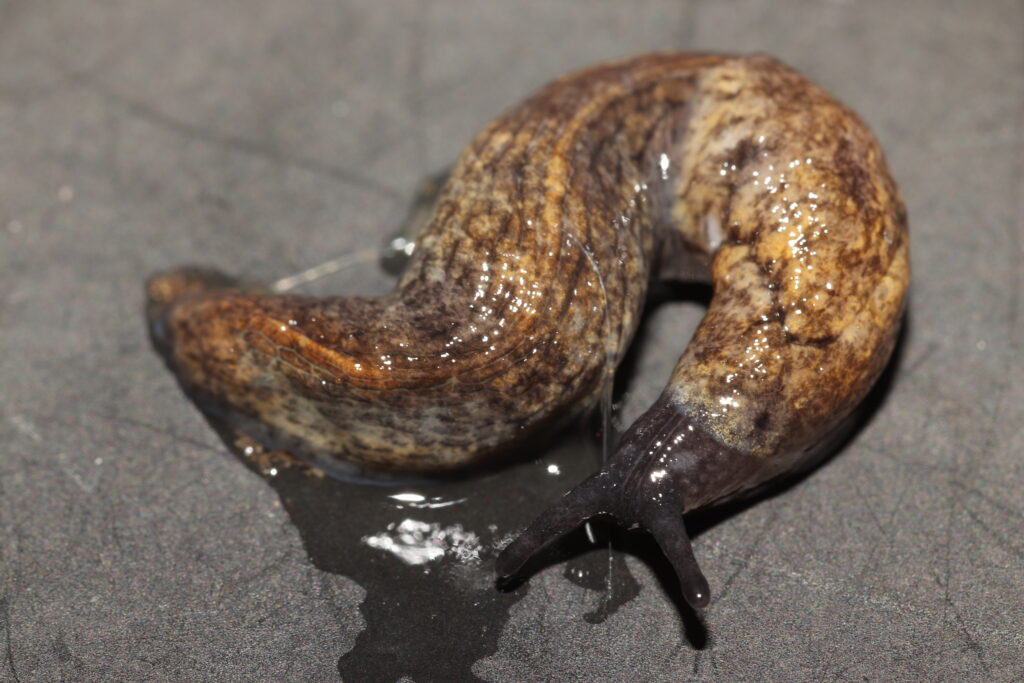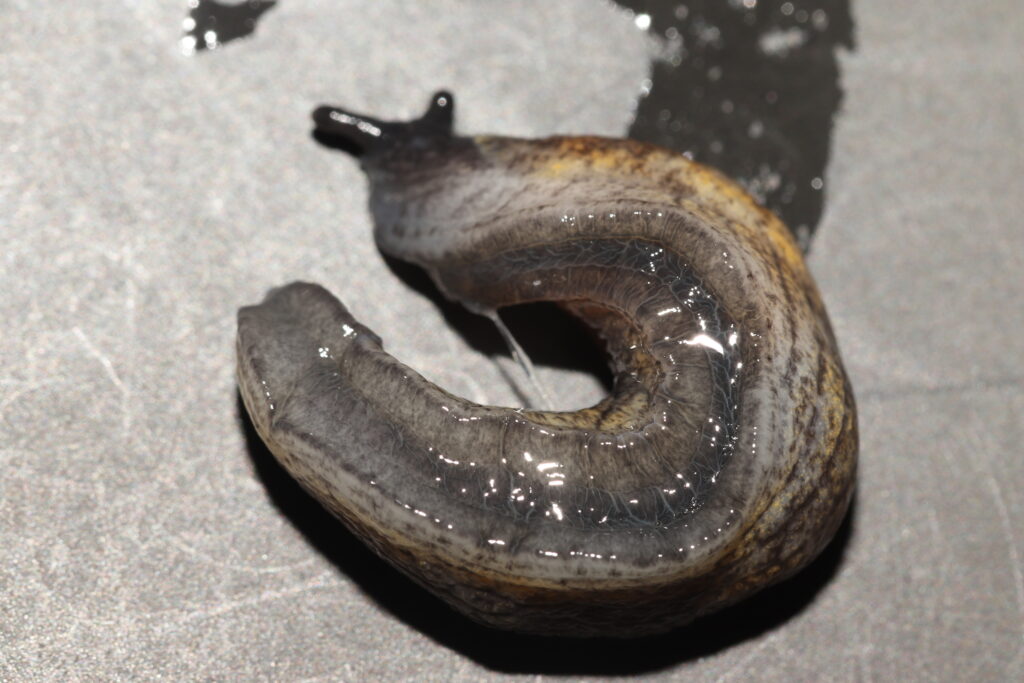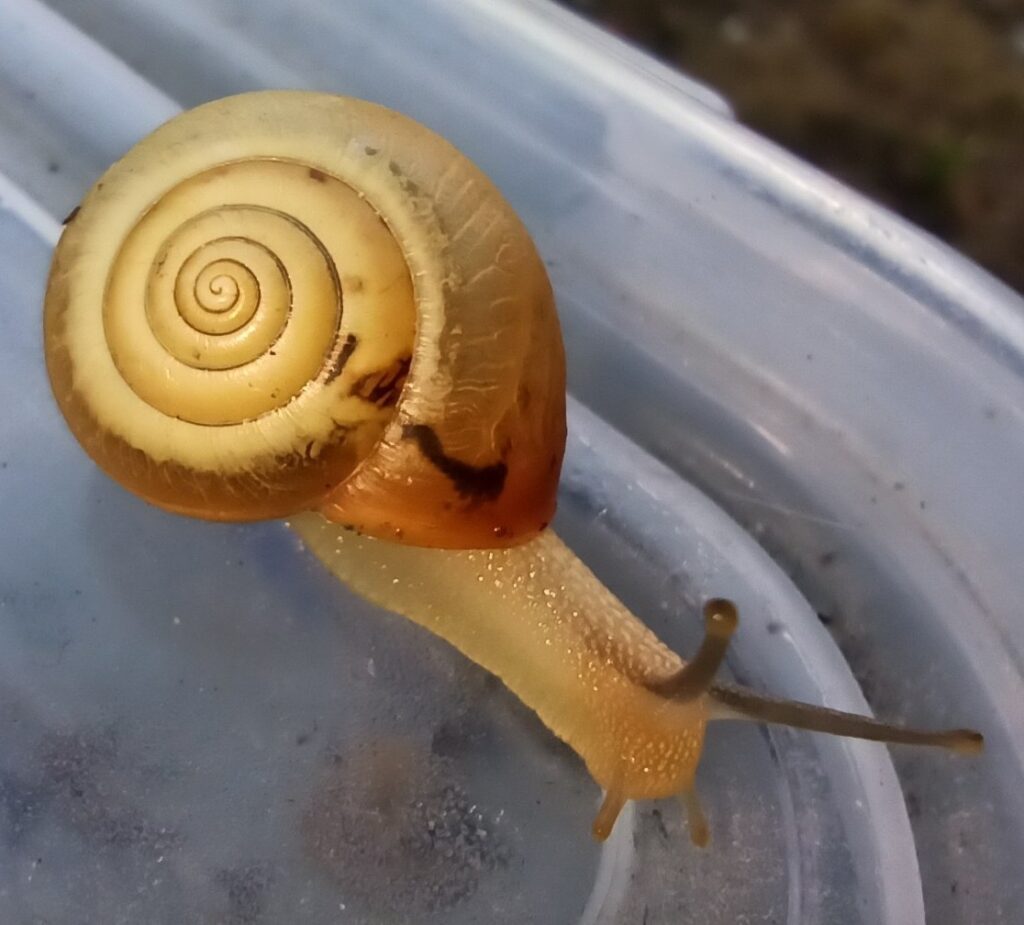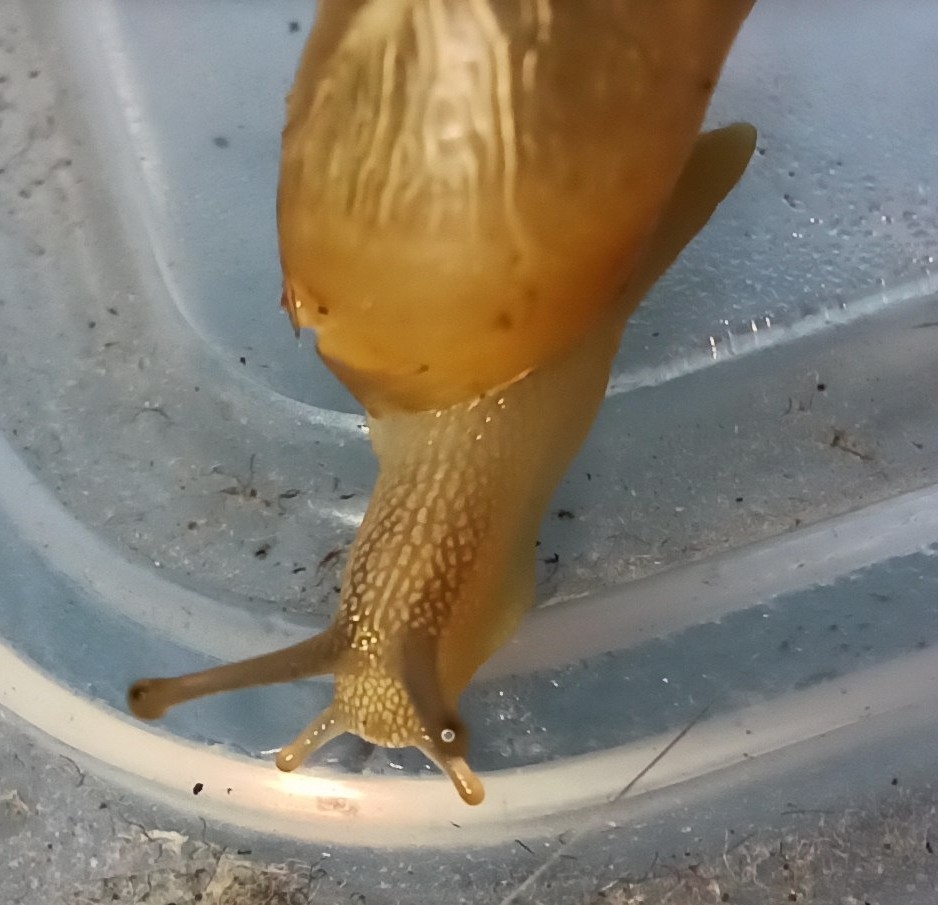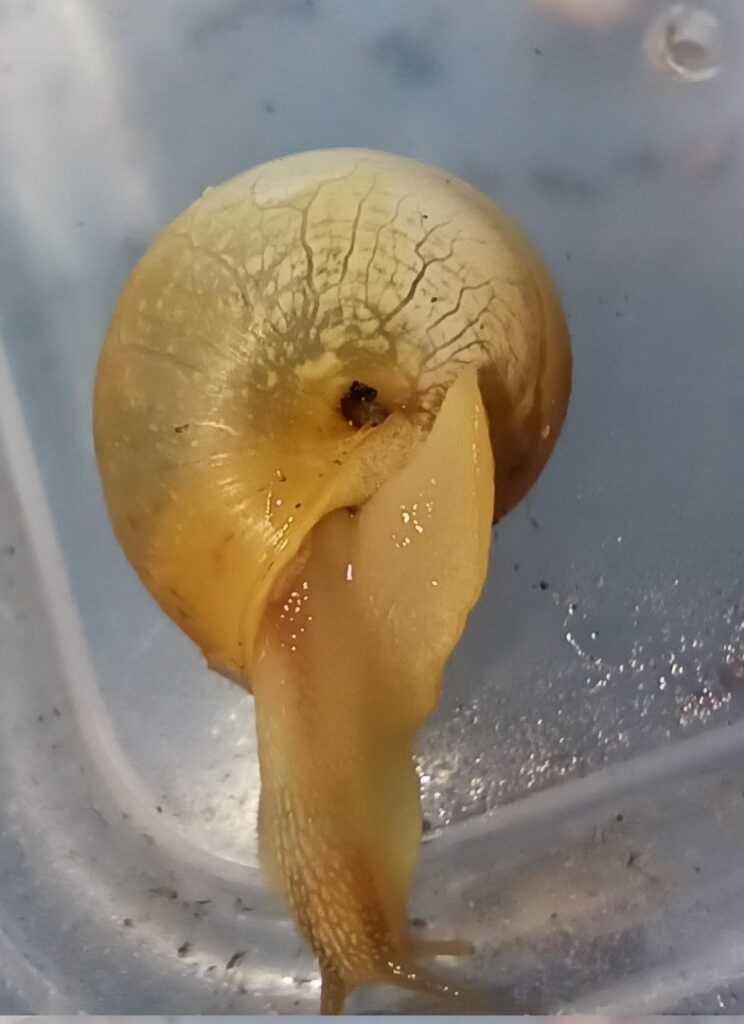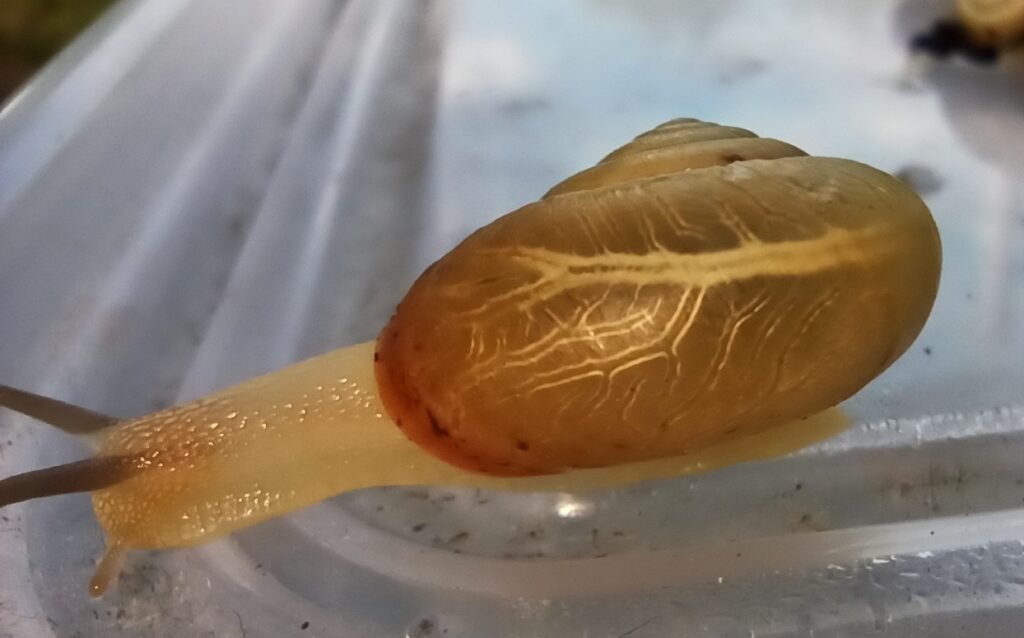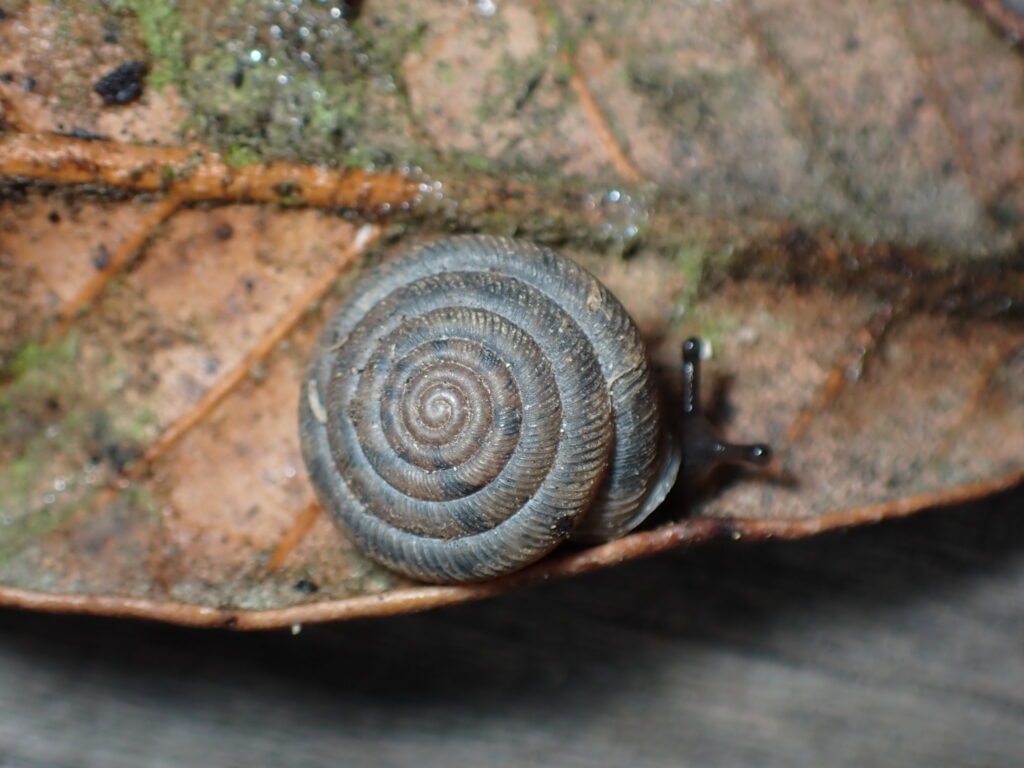
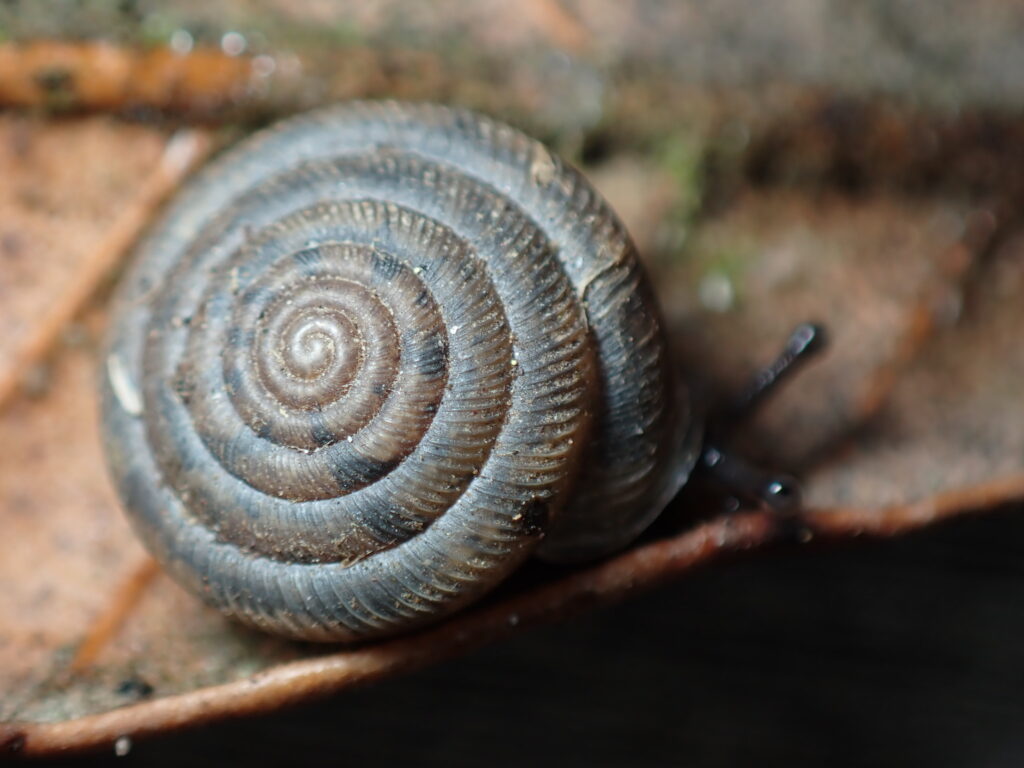
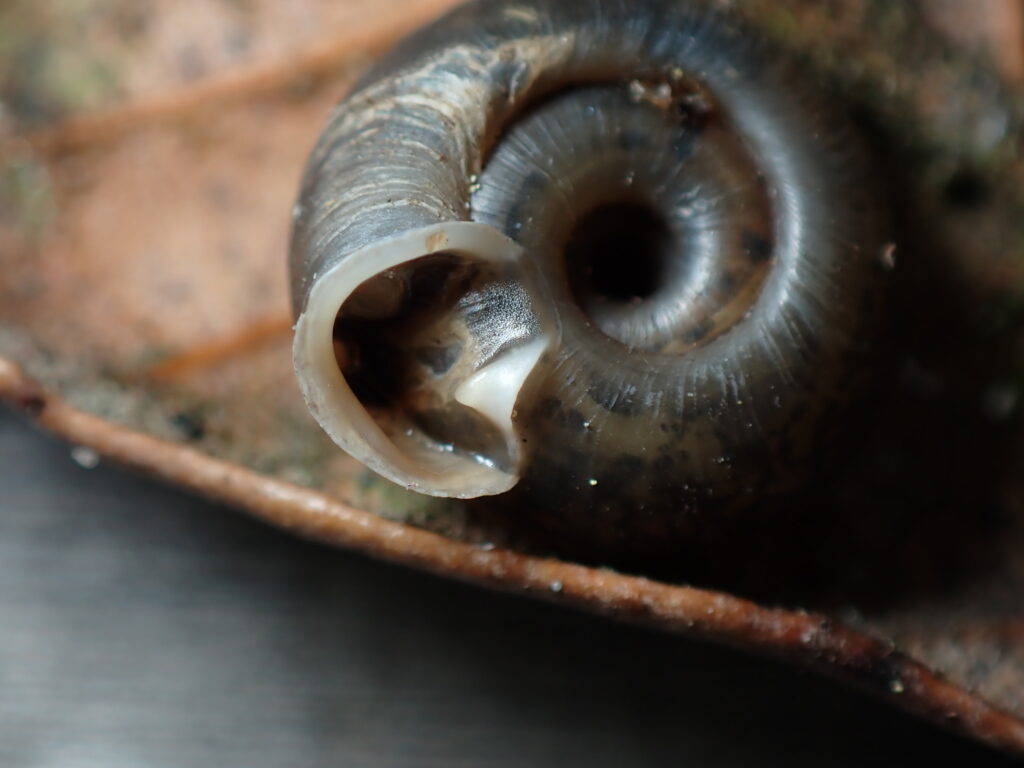
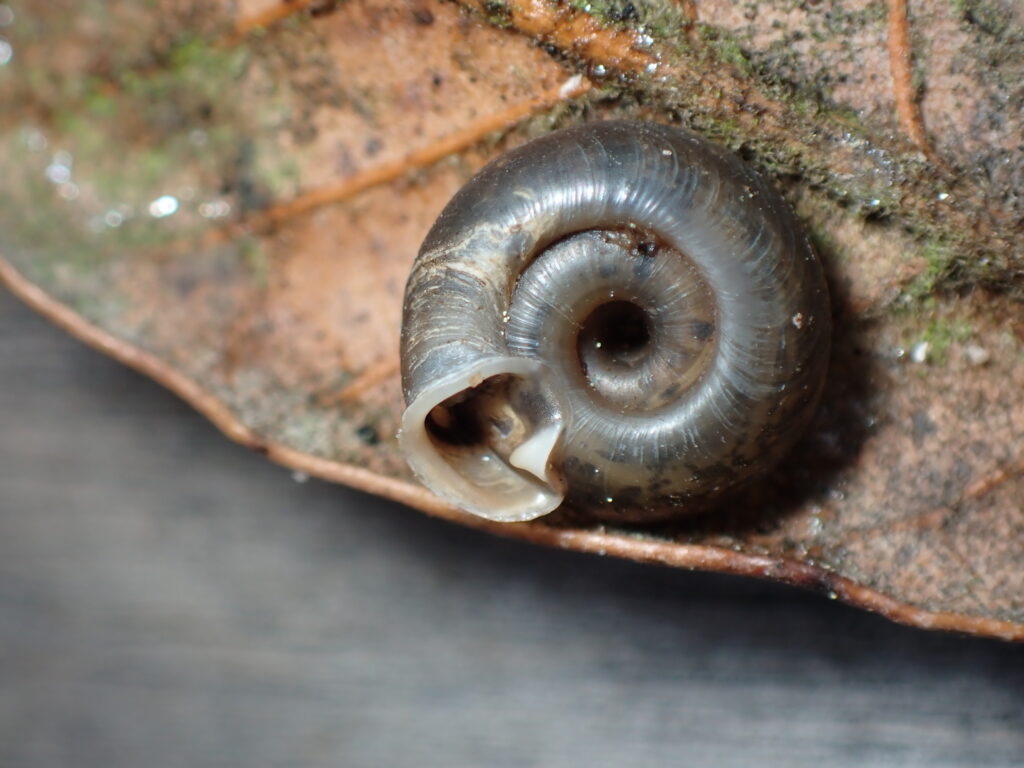
Image Usage Information
Family: Polygyridae
Common name: Southern Flatcoil
Discovery: Megerle von Mühlfeld, 1818
Identification
Width: 11-18 mm
Height: 3.5-4.6 mm
Whorls: 7-9
This animal’s flat shell is reminiscent of a coin (occasionally spire is slightly raised) with a very wide umbilicus that is larger than half the shell diameter. It is sculptured with delicate ribs. The aperture has a single tooth (parietal). The lip in adults is narrowly reflected (Pilsbry, 1940).
Ecology
In its native range, it can be found on low ground in sunny situations (Hubricht (1985). In northeastern North America, Polygyra cereolus can be found in disturbed areas associated with humans.
Taxonomy
Polygyra cereolus can sometimes be difficult to separate from the similar P. septemvolva. In P. septemvolva, the spire is usually a bit more elevated than in P. cereolus and the umbilicus (while variable) can sometimes be a bit smaller (although both species overlap in those characters). To be certain, check for a long internal lamella within the body whorl 0.5 to 1.0 whorl back from the aperture (requires breaking part of the shell), which is present in P. cereolus but absent in P. semptemvolva.
Synonyms for Polygyra cereolus include Helix carpenteriana, Helix cereolus, Helix febigeri, Polygyra carpenteriana, and Polygyra septemvolva var. floridana.
Distribution
Polygyra cereolus is originally from Florida and counties along the Gulf coast, and coastal areas into South Carolina. More recently, it has been introduced with tropical plants and by other means to areas as far north as Virginia.
Conservation
NatureServe Global Rank: G4, Apparently Secure
